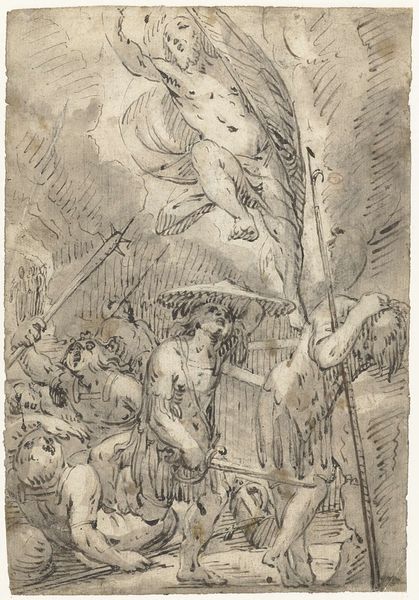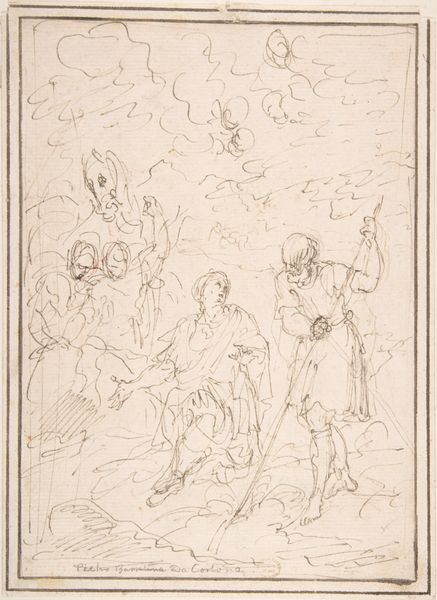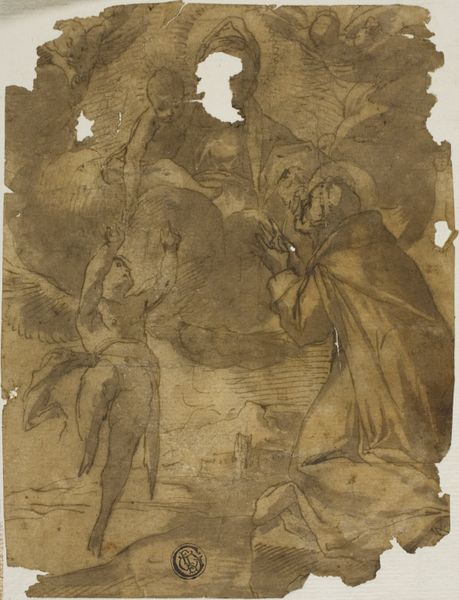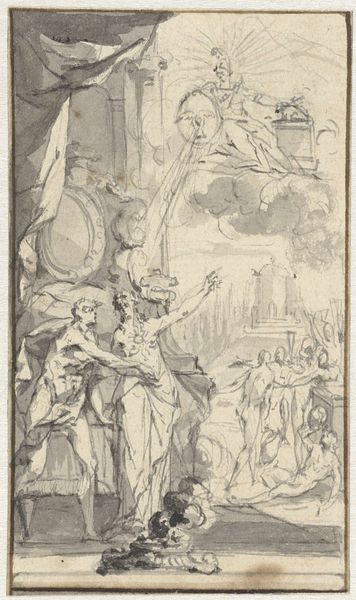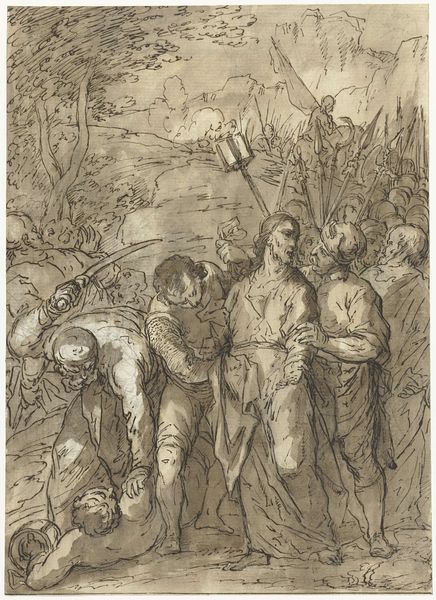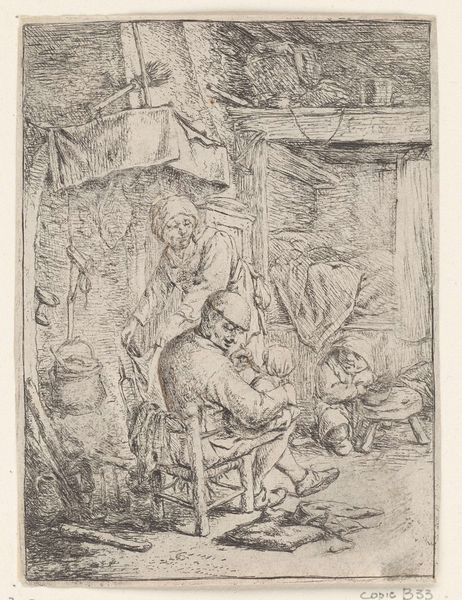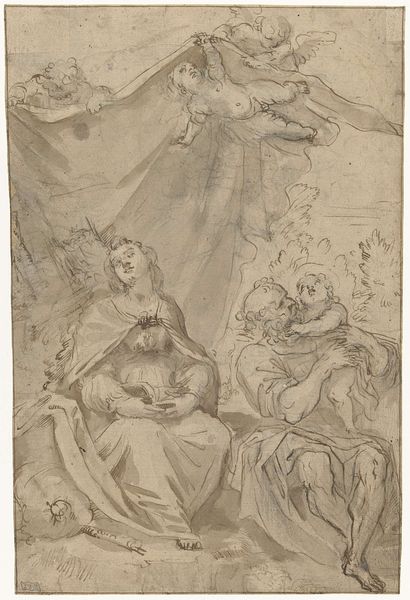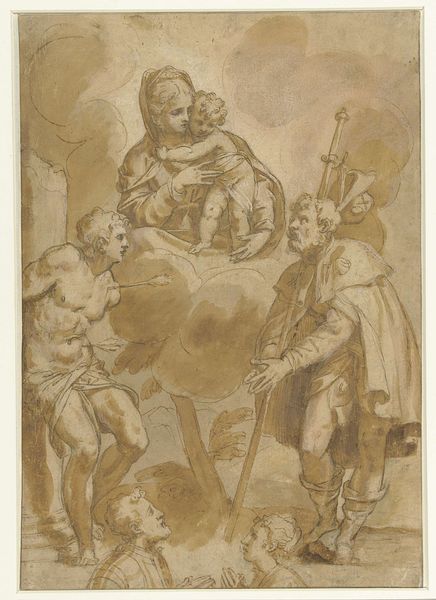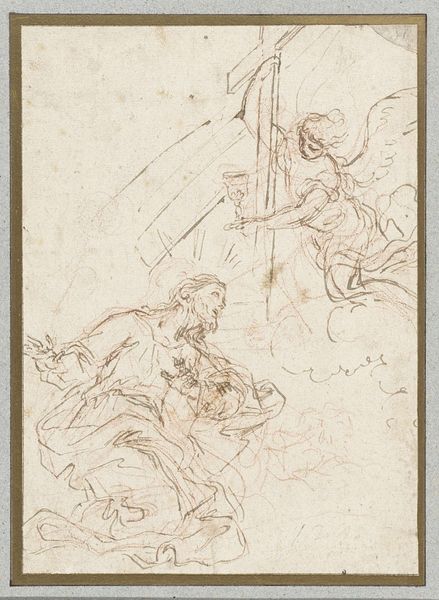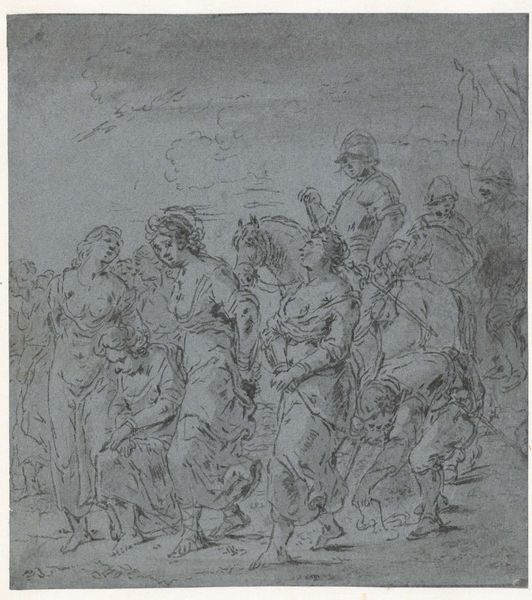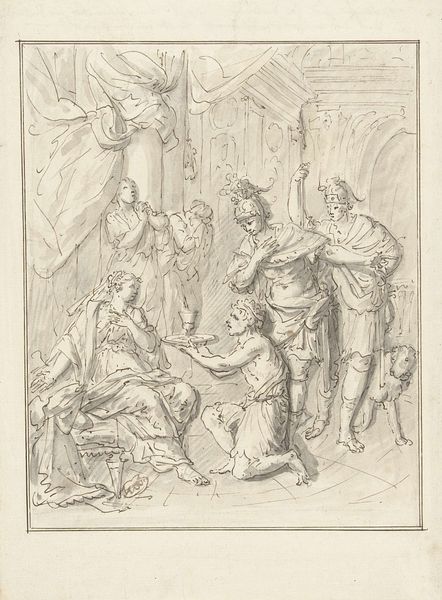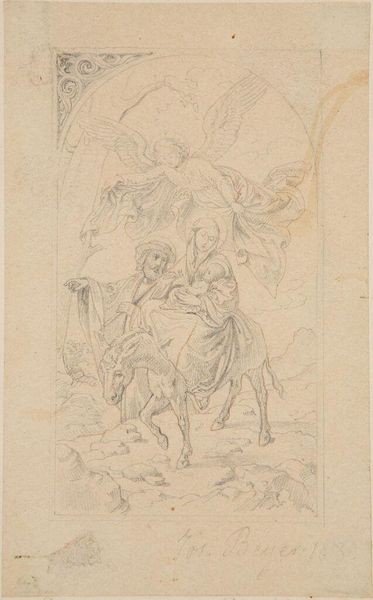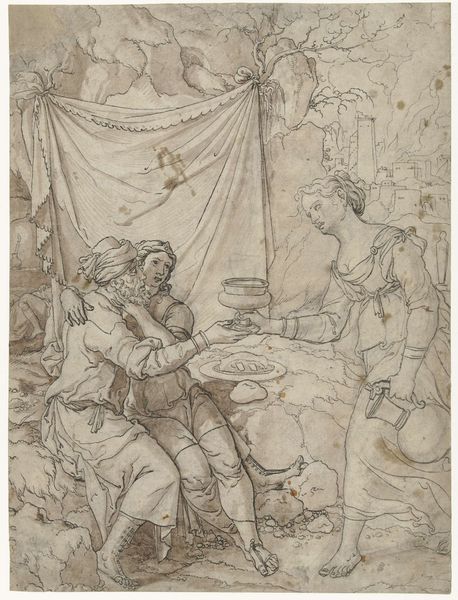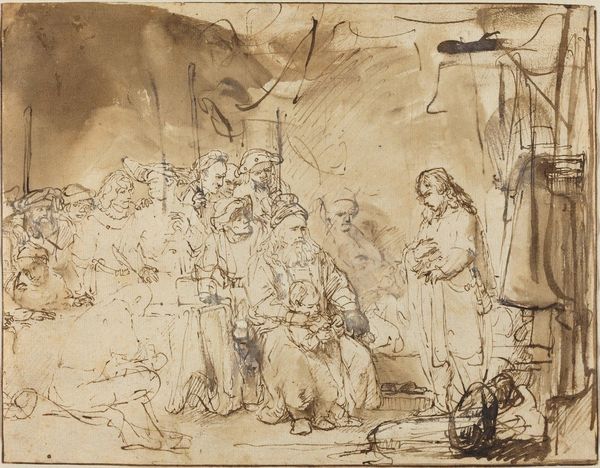
drawing, paper, ink
#
drawing
#
narrative-art
#
baroque
#
figuration
#
paper
#
ink
#
genre-painting
Dimensions: height 305 mm, width 194 mm
Copyright: Rijks Museum: Open Domain
Curator: Here we have a drawing attributed to Gerard ter Borch, titled "Christus en de discipelen op pad naar Emmaus," or Christ and the Disciples on the Road to Emmaus. It was created sometime between 1614 and 1655 and employs ink on paper. What’s your immediate reaction to this rendering? Editor: It’s stark. The lack of color and the wispy lines give it an ethereal, almost ghostly quality. The figures seem caught in a moment of transition, barely tethered to the earth. Curator: The choice of medium is quite telling, wouldn't you agree? Drawing, particularly with ink, was often used for preparatory sketches or studies. So, in that context, this might be considered Ter Borch grappling with the depiction of a key New Testament narrative, open to later development. We must think about his practice. Editor: I am struck by the recurring symbol of the pilgrim's staff each of the three figures is holding. Staves recur throughout art history. Are these bearers of protection? Symbols of journey? Or of religious office? In this case, their prominence suggests a narrative weight, something fundamental about being human. Curator: Indeed, the staff can be viewed as a symbol of authority, protection, and guidance. Considering the context, it underscores the disciples' dependence on Christ, their guide, both literally on the road to Emmaus and metaphorically on their spiritual paths. Furthermore, the somewhat hurried, uncertain lines hint at the broader uncertainties of the period and also maybe more pointedly, our own individual searches for direction. Editor: Notice also how the background fades away—a vague, unformed landscape. I wonder if this vagueness emphasizes the psychological aspects of faith, where inner conviction and not external certainty provide true meaning. Curator: A point well taken. Ter Borch might be intentionally downplaying the external world to draw attention to the internal transformations occurring within the disciples as they unknowingly walk alongside Christ. His hand seems unsure; that feels deeply embedded in an artist like Ter Borch from this period. Editor: Ultimately, this drawing captures not only a specific biblical event, but also the timeless journey of faith, doubt, and the search for meaning—a story still unfolding within us today, it seems. Curator: Yes, I see it too: an attempt to depict that complex relationship between our personal sense of belief and our historical awareness of scripture, which is never complete but requires perpetual reflection.
Comments
No comments
Be the first to comment and join the conversation on the ultimate creative platform.
